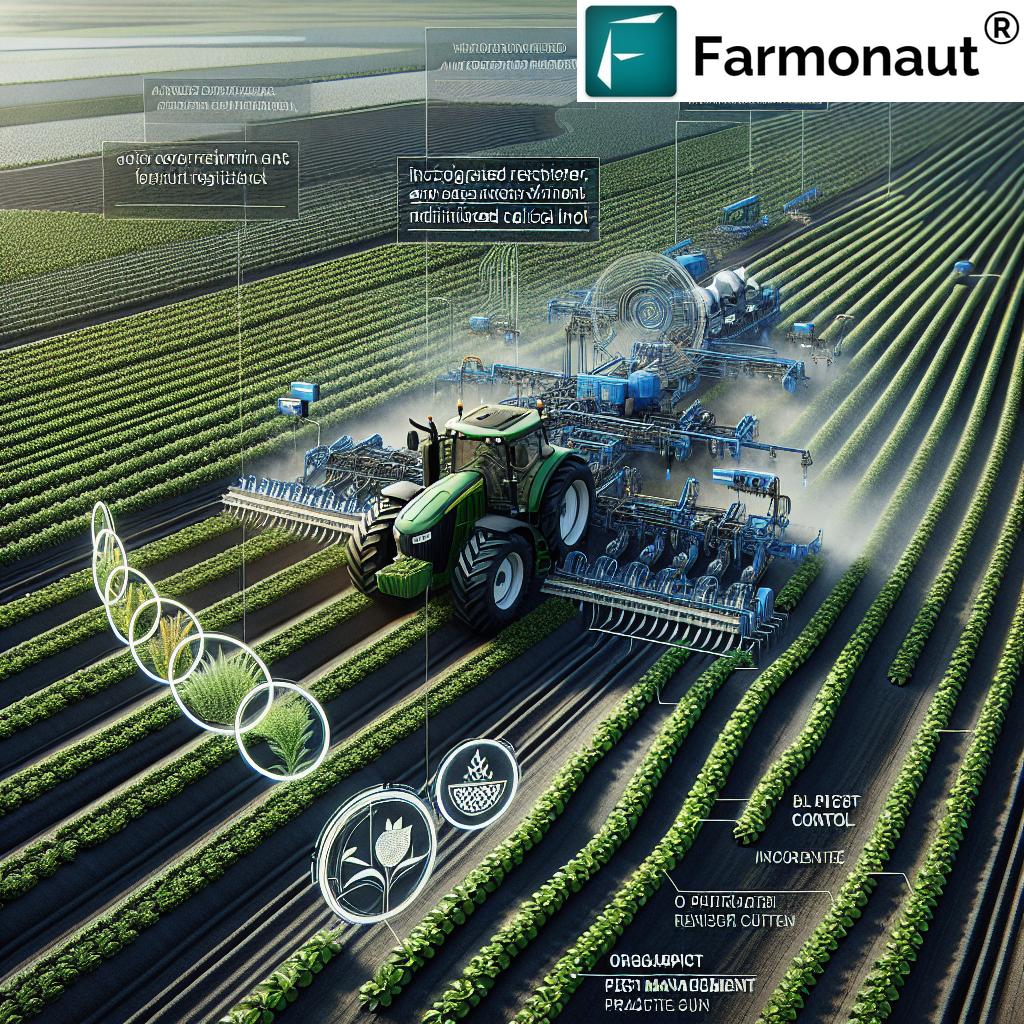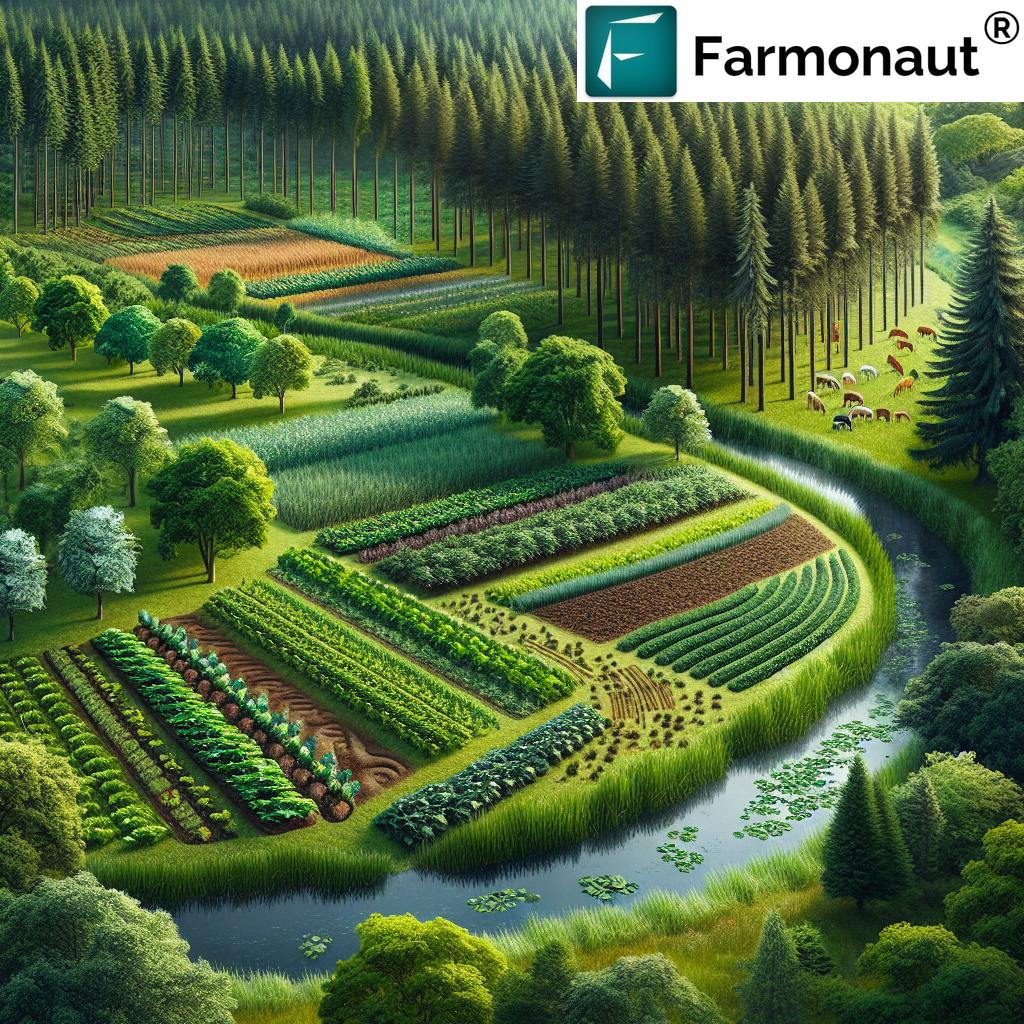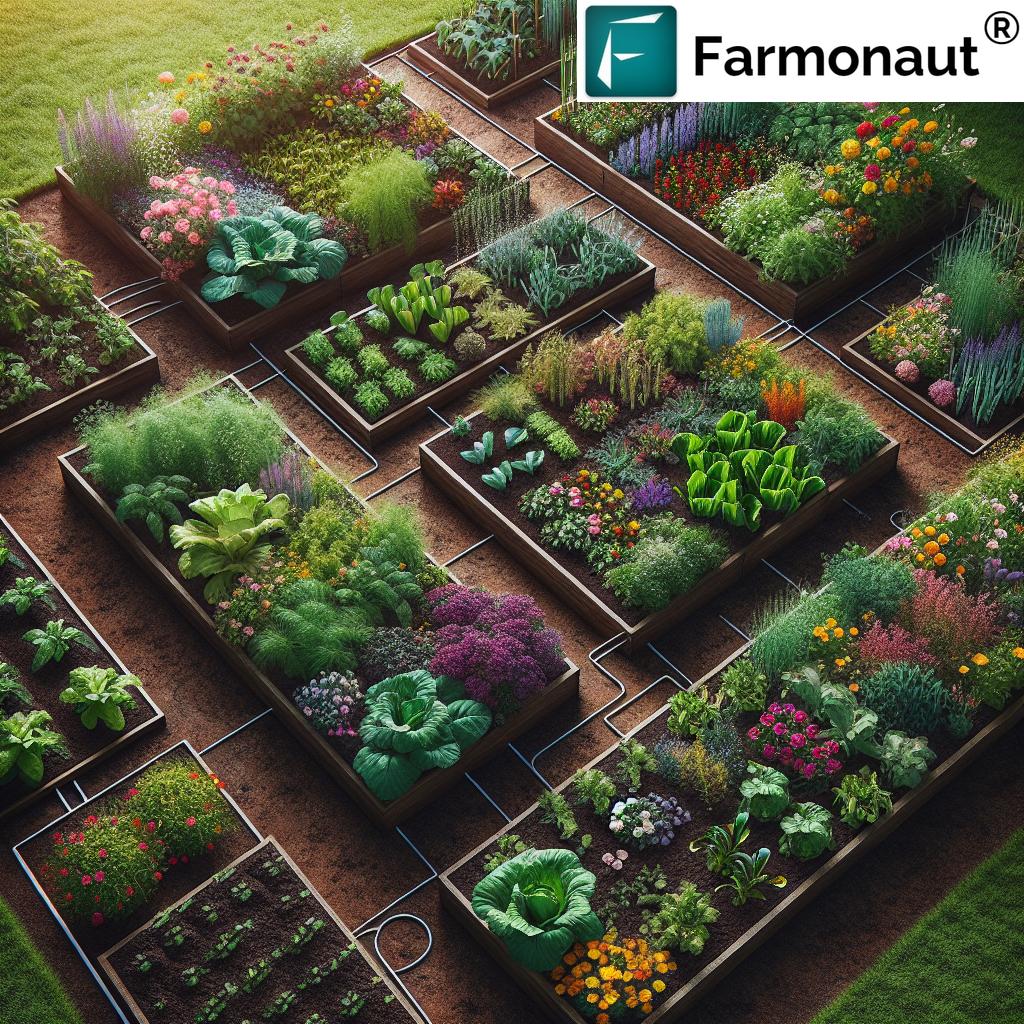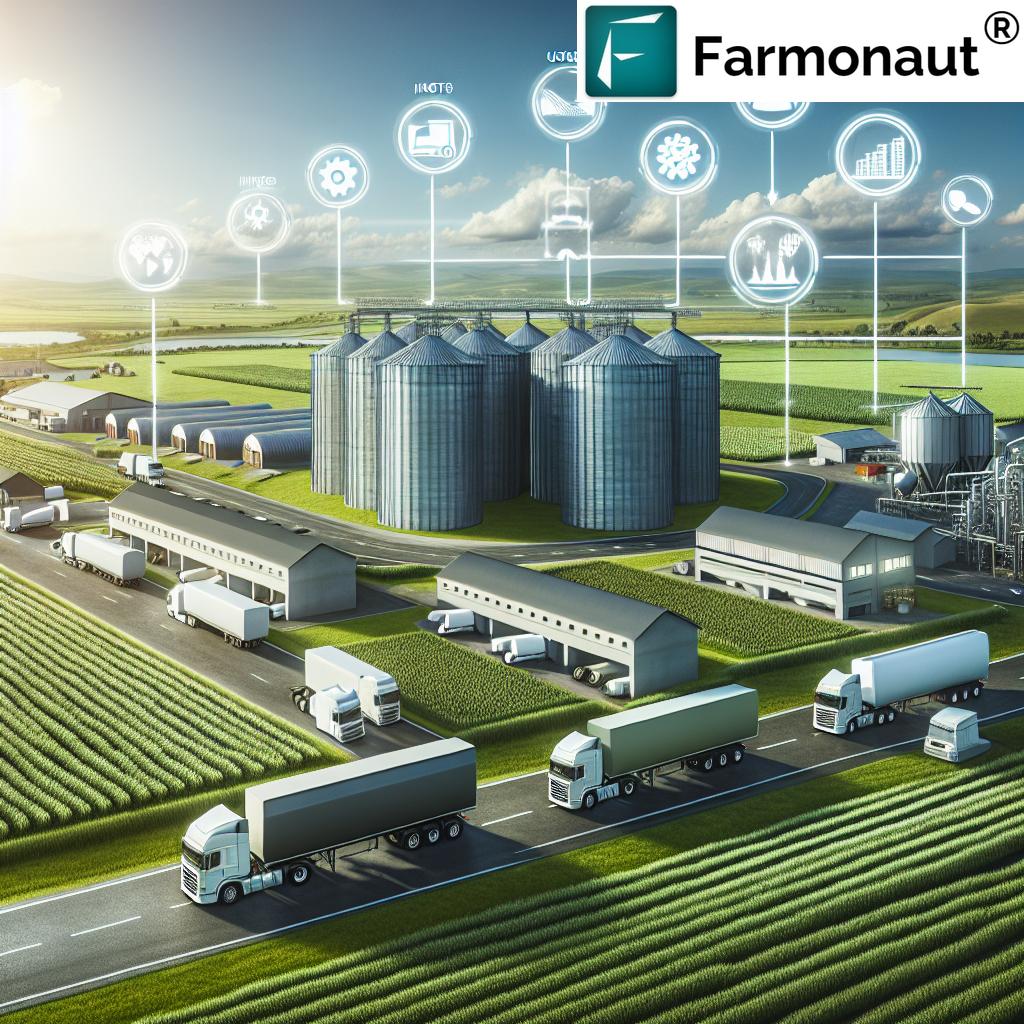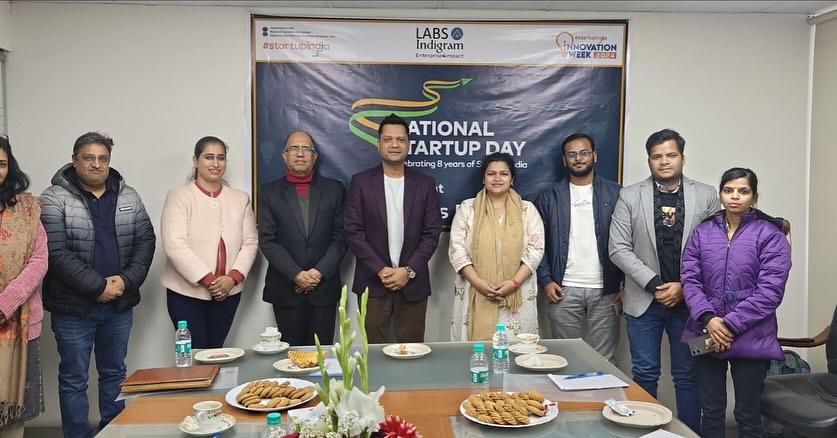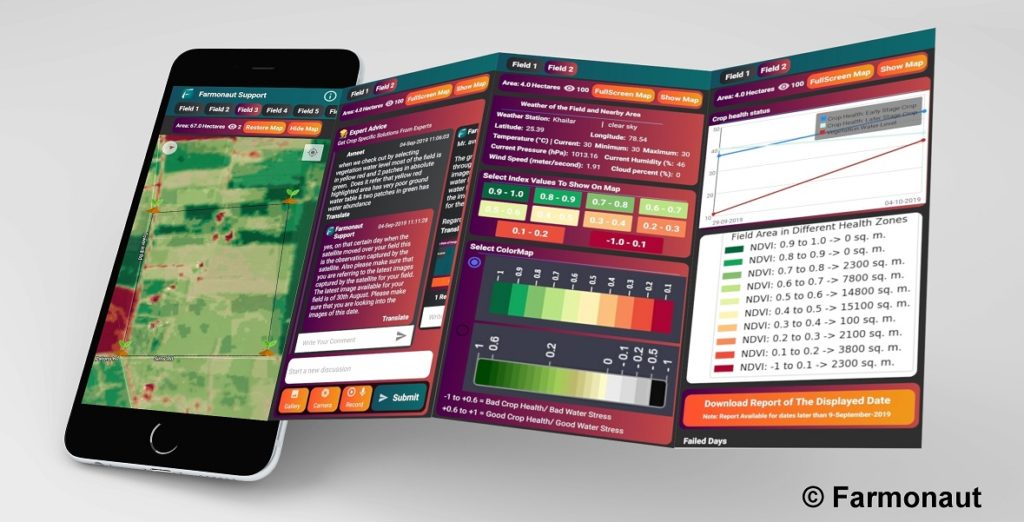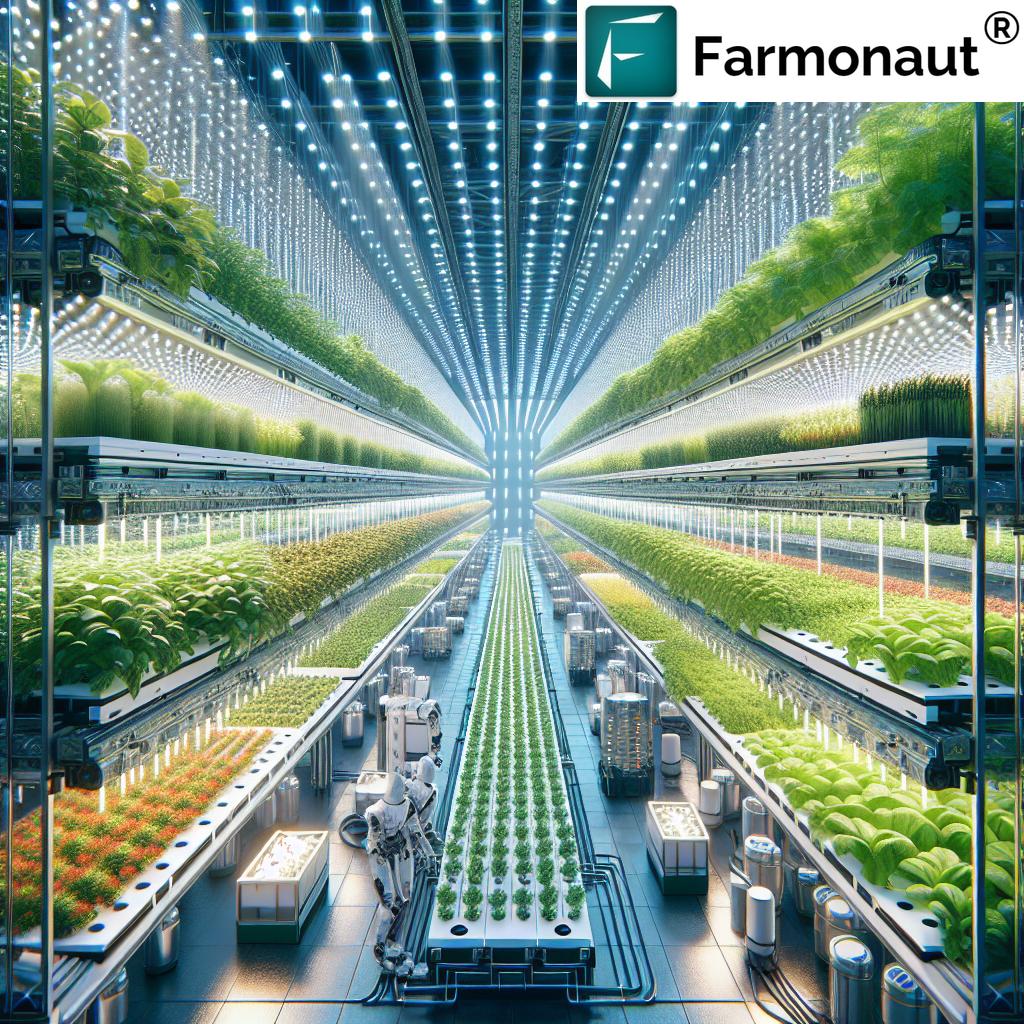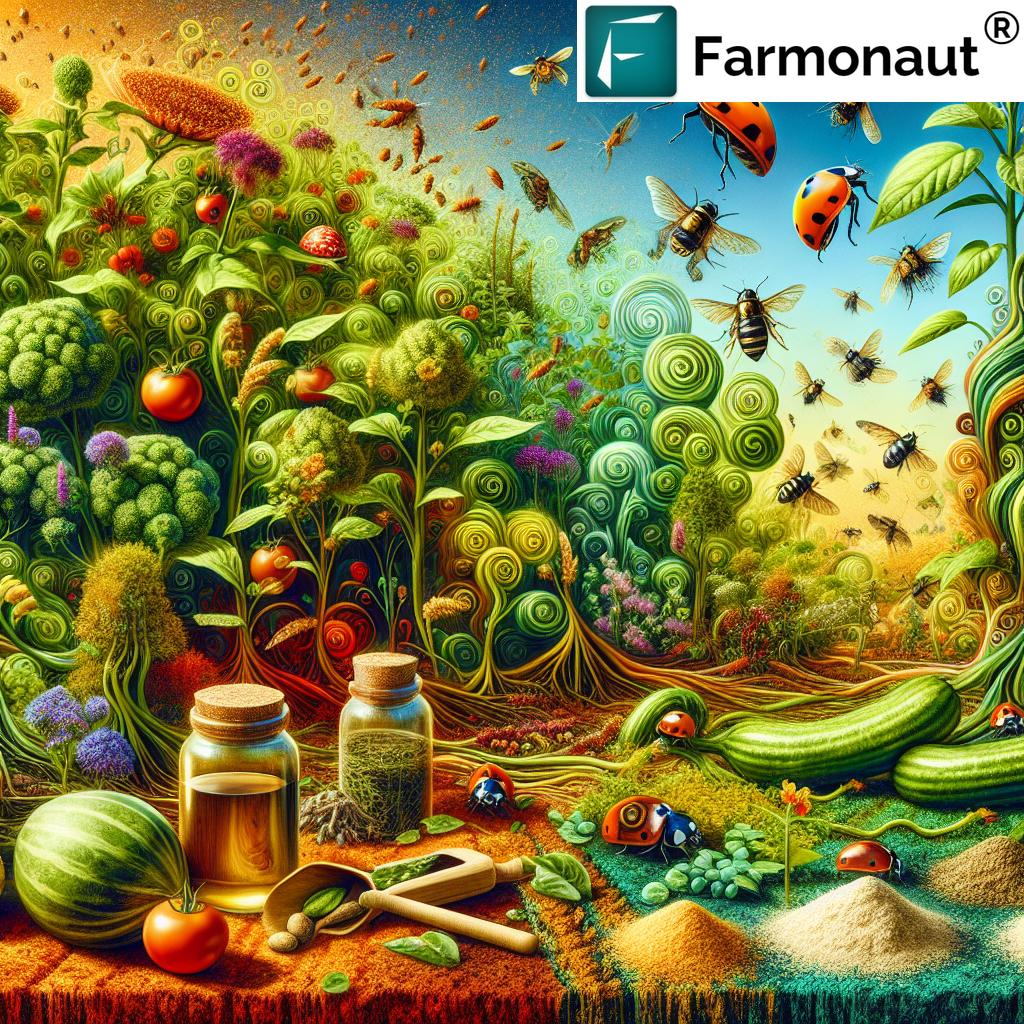Agricultural Practices That Boost Yields Fast: 10 Secrets
Meta Description: Enhance crop yields sustainably with these 10 secrets to sustainable agriculture practices. Explore soil health management, precision agriculture, IPM, water management, and more for higher crop production.
Table of Contents
- Introduction: Enhancing Crop Yields Sustainably
- 1. Soil Health Management
- 2. Precision Agriculture
- 3. Integrated Pest Management (IPM)
- 4. Crop Breeding and Biotechnology
- 5. Efficient Water Management in Agriculture
- 6. Agroecological Practices
- 7. Controlled Environment Agriculture
- 8. Climate Resilient Farming
- 9. Sustainable Fertilization
- 10. Education & Agricultural Extension Services
- Farmonaut’s Role in Sustainable Agriculture
- Comparative Table: Sustainable Agricultural Practices
- FAQ: Agricultural Practices & Boosting Yields Fast
- Conclusion
“Precision agriculture can increase crop yields by up to 20% while reducing fertilizer use by 15%.”
Introduction: Enhancing Crop Yields Sustainably
As the global population continues to surge, one of our most fundamental challenges in agriculture is enhancing crop yields to meet growing food demand—all while maintaining our environment and resources for generations to come. Achieving this balance is not simply about producing more food; it’s about doing so sustainably, using a combination of traditional knowledge and modern, innovative approaches tailored to specific environmental and economic contexts.
In this comprehensive guide, we’ll uncover ten proven sustainable agriculture practices to boost yields rapidly and responsibly. From the fundamentals of soil health to the cutting-edge world of precision agriculture technology, integrated pest management (IPM), and beyond, every step we discuss aims to enhance productivity, preserve natural resources, and foster resilient farming systems.
Let’s embark on a journey through science, technology, and experience-driven wisdom to unlock the secrets behind sustainable, productive farming.
1. Soil Health Management: The Cornerstone of Productive Agriculture
Why Soil Health is Essential for Higher Crop Yields
Healthy soil is the bedrock of productive agriculture. When our soil is rich in organic matter, teeming with beneficial microorganisms, and structurally robust, it enables crops to establish strong root systems, absorb nutrients efficiently, and withstand environmental stresses like drought or pests. A well-managed soil can lead to dramatically increased yields over time, while also reducing the need for chemical fertilizers and pesticides.
- Crop Rotation: Alternating the types of crops grown in each field helps disrupt pest and disease cycles, prevents nutrient exhaustion, and maintains soil fertility.
- Cover Cropping: Planting cover crops (e.g., clover, vetch) between growing seasons shields soil from erosion, increases organic matter, and improves nutrient retention.
- Reduced or No-Till Farming: Minimizing tillage (learn more) preserves soil structure, reduces disturbance, maintains organic matter, and enhances water retention.
- Compost and Organic Amendments: Regular additions of compost or manure further fortify the soil, promoting soil health and nourishing future crops.
By making soil health management a priority, we create a resilient foundation for sustainably enhancing crop yields and meeting the global food demand.
2. Precision Agriculture: Harnessing Technology for Maximum Yields
What is Precision Agriculture Technology?
The advent of precision agriculture has revolutionized modern farming practices by leveraging advanced technologies to optimize every step of the production process. Through satellite imaging, soil sampling, GPS-guided machinery, and remote sensing, farmers can monitor field variability, assess soil and crop health, and apply water, fertilizers, and pesticides with precise accuracy, reducing resource waste and boosting yields.
- Variable Rate Input Application: Sensors and data analytics guide us to apply inputs only where needed, saving costs and promoting sustainability.
- Real-time Crop Monitoring: Satellite data and mobile apps (like Farmonaut) alert us about crop health, moisture stress, disease onset, and more, allowing informed decisions at the right time.
- Optimizing Field Variability: Instead of treating an entire field the same, we address specific zones differently, enabling higher yields and less input wastage.
Adopting precision agriculture technology increases efficiency, sustains economic viability, and is critical for sustainably enhancing crop yields as land and water resources grow more limited.
Discover Farmonaut’s crop health monitoring platform: Our satellite-powered app delivers actionable insights, including vegetation indices, soil moisture, and weather data to help farmers optimize every input for maximum yields.
Explore Farmonaut APIs: Developers and agribusinesses can integrate Farmonaut’s satellite and weather API for powerful data-driven farming. Read our API documentation to get started.
“Integrated Pest Management (IPM) can cut pesticide use by 50% without sacrificing crop productivity.”
3. Integrated Pest Management (IPM): Balancing Yield and Sustainability
Understanding the IPM Approach
Pests and diseases pose a significant threat to crop yields and farmer incomes. The integrated pest management (IPM) strategy merges multiple cultural, biological, physical, and chemical tools in an economically and ecologically sound manner. Instead of blanket pesticide applications, we prioritize:
- Regular Monitoring: Tracking pest populations using traps and field scouting.
- Setting Action Thresholds: Implementing control measures only when pest numbers reach damaging levels, minimizing unnecessary pesticide usage.
- Biological Controls: Incorporating beneficial insects or microbial agents to manage pests naturally.
- Cultural & Physical Controls: Crop rotation, intercropping, and mulching to control pests and diseases.
- Judicious, Targeted Application of Pesticides: Only using chemical pesticides as a last resort and selecting those with minimal environmental impact.
The results? Reduced chemical dependence, lower input costs, and healthier crops—all leading to sustainable yield growth.
For precision IPM implementation, Farmonaut’s platform provides real-time guidance on pest and disease hotspots, empowering farmers with timely, informed decisions to protect yields.
4. Crop Breeding and Biotechnology: Developing Stress-Resistant Varieties
Enhancing Productivity through Genetics
Advancements in crop breeding and biotechnology have been instrumental in developing varieties with improved resistance to diseases, pests, and unpredictable weather. The development of drought-tolerant rice in India exemplifies how modern breeding helps farmers adapt to specific climate patterns and maintain stable yields (see more).
- Traditional Breeding: Selecting parent plants with desirable traits and cross-breeding for higher yields and resilience.
- Biotechnology: Introduction of genes conferring resistance to pests, diseases, or environmental stresses.
- Climate Adaptation: Engineering crops that withstand floods, drought, or saline soils.
By adopting improved crop varieties, we not only boost production but also reduce dependence on chemical inputs and mitigate climate-related risks. Breeding innovation is key to climate resilient farming and enhancing crop yields under changing global conditions.
5. Efficient Water Management in Agriculture
Why Water Management is Critical
Water scarcity and misuse threaten our ability to maximize crop yields. Efficient water management in agriculture integrates sustainable water use with modern technologies to drive both productivity and environmental sustainability.
- Drip Irrigation: Targeted delivery of water directly to plant roots minimizes waste and optimizes growth.
- Rainwater Harvesting: Collecting and storing rain increases water availability and reduces dependence on external sources.
- Soil Moisture Sensors: Monitoring soil moisture prevents both under- and over-irrigation.
- Reduced Evaporation: Mulching or covering soil conserves moisture and lowers water loss.
With tools like Farmonaut’s crop monitoring platform, farmers gain access to accurate field-level moisture data, informing irrigation schedules to maximize efficiency and boost yields sustainably.
Learn more about sustainable resource management for large-scale farms with Farmonaut’s Agro Admin Application. This robust tool enables agribusinesses to supervise operations, optimize water, fertilizers, and monitor farm activities efficiently.
6. Agroecological Practices: Working with Nature
Agroecology for Sustainable Yield Enhancement
Agroecological practices embed ecological principles within farming systems to promote biodiversity, sustainability, and food security. Intercropping (growing different crops together—read more), crop-livestock integration, and agroforestry combine to enhance resource use efficiency and decrease chemical dependency.
- Intercropping: Maximizes space and sunlight use, reduces pest outbreaks, and improves soil health.
- Diversified Rotations: Broadens soil microorganism diversity and interrupts pest cycles.
- Agroforestry: Combines crops, trees, and sometimes livestock for a balanced, productive ecosystem.
By implementing agroecological approaches, farmers can attain higher and more stable yields while fostering healthier soils, less erosion, and greater system resilience.
Interested in sustainable forestry and crop plantation advisory? Try Farmonaut’s Plantation & Forest Advisory for tailored, satellite-based insights supporting diversified and sustainable agriculture practices.
7. Controlled Environment Agriculture: Maximizing Yields All Year
What is Controlled Environment Agriculture (CEA)?
Controlled environment agriculture (CEA) uses technology to regulate critical growing factors—temperature, humidity, and light—independent of external conditions (more). Whether via greenhouses or vertical farms, CEA enables:
- Year-round Production: Grow crops continuously, immune to weather patterns.
- Space Efficiency: Achieve higher yields per area—essential where land is limited.
- Reduced Pest Pressures: Enclosed growing areas prevent most pest infestations.
- Precise Input Control: Exact amounts of water, nutrients, and light tailored to crop needs.
CEA’s integration with digital farm management platforms like Farmonaut supports data-driven oversight, optimizing resource use and boosting yields with minimum environmental impact.
8. Climate Resilient Farming: Adapting to Change for Stable Production
Coping with Climate Change
The rapid pace of climate change demands innovative, climate-resilient farming practices to ensure reliable food production. Focus areas include:
- Developing Drought-resistant Crops: New varieties thrive under low water or heat stress (example: India’s climate-resilient rice).
- Soil Carbon Sequestration: Practices like agroforestry and no-till not only improve soil health but also absorb atmospheric carbon, mitigating climate impact.
- Adaptable Planting Schedules: Adjusting sowing and harvesting times as weather patterns evolve.
- Regenerative Agriculture: Focused on restoring soil and ecosystem health, this method helps sustain productivity (learn more).
Using Farmonaut’s Carbon Footprinting, agribusinesses and government planners can track, reduce, and verify the climate impact of their farming operations. This is key for both regulatory compliance and true farming sustainability.
9. Sustainable Fertilization: Optimizing Nutrient Use
Why Sustainable Fertilizer Strategies Matter
Overuse of chemical fertilizers degrades soil health, pollutes water, and can ultimately reduce crop yields. Instead, consider:
- Organic Fertilizers for Crops: Enhance long-term fertility and soil structure by compost, manure, or crop residue applications.
- Bio-Fertilizers: Microorganisms that encourage natural nutrient cycling, reducing chemical dependency.
- Precision Application: Site-specific application, aided by platform tools such as Farmonaut’s soil and crop maps, minimizes fertilizer waste.
Research from Brazil shows that biological nitrogen fixation can cut chemical fertilizer needs, helping farmers raise yields sustainably (see more).
10. Education & Agricultural Extension Services
The Power of Knowledge in Modern Farming
Wider adoption of sustainable agriculture practices hinges on access to current knowledge and real-world support. Agricultural extension services and farmer education help bridge the gap between research and practice.
- Training Programs: Practical sessions teach farmers about soil management, IPM, water-use efficiency, and more.
- Digital Advisory: Apps and online tools like Farmonaut’s Jeevn AI Advisory deliver personalized recommendations, weather forecasts, and best practice reminders directly to farmers’ mobile devices.
- Real-time Support: Field agents and helplines provide timely, region-specific guidance for everyday decision-making.
When farmers are empowered to make informed decisions, they are better equipped to adopt innovative approaches—resulting in consistently higher yields with fewer inputs and risks.
Secure transparency and crop value: Enable traceability for your agricultural products with Farmonaut’s Blockchain Traceability Solution, trusted by supply chain leaders to boost market confidence and sustainability.
“Precision agriculture can increase crop yields by up to 20% while reducing fertilizer use by 15%.”
Farmonaut’s Role in Sustainable Agriculture Practices
How Farmonaut Supports Boosting Crop Yields Sustainably
Farmonaut empowers farmers and agribusinesses worldwide to implement the best sustainable agriculture practices by making cutting-edge technologies affordable and accessible via its Android, iOS, web app, and API. Here’s how we support sustainable yield enhancement:
- Satellite-Based Crop Health Monitoring: Multispectral imaging allows real-time detection of crop stress, disease, and nutrient deficiency.
- AI-Based Advisory (Jeevn AI): Personalized recommendations based on satellite and field data to optimize irrigation, fertilizer usage, and pest management.
- Blockchain Traceability: Ensures full transparency and authenticity from farm to consumer, promoting sustainable and honest food production.
- Fleet and Resource Management: Optimizes machinery and workforce deployment for higher efficiency and reduced costs (learn more).
- Carbon Footprinting: Let’s you monitor and minimize the environmental impact of farming activities, promoting true sustainability.
- Crop Loan and Insurance Support: Satellite-based verification simplifies access to agricultural credit and insurance (details here).
For every scale, every context: Whether you’re a smallholder seeking actionable insights or a large enterprise managing thousands of hectares, Farmonaut’s platform solutions scale with your needs—always putting sustainability and yield improvement at the core.
Comparative Table: Sustainable Agricultural Practices
See how each sustainable agriculture practice measures up for estimated yield increase, environmental impact, and adoption ease:
| Practice Name | Brief Description | Estimated Yield Increase (%) | Environmental Impact | Ease of Adoption |
|---|---|---|---|---|
| Soil Health Management | Crop rotation, cover cropping, and reduced tillage to maintain soil fertility and structure | 10–30% | Improved soil health, increased water retention, less erosion | Medium |
| Precision Agriculture | Use of satellite, GPS, and data analytics for targeted input application | 15–20% | Reduced water and chemical use, less waste | Medium |
| Integrated Pest Management (IPM) | Combining cultural, biological, and chemical tools for optimized pest control | 10–25% | Reduced pesticide use, healthier ecosystems | Medium |
| Crop Breeding & Biotechnology | Developing resilient crop varieties through genetics and technology | 15–30% | Less dependency on chemical inputs, adaptability to climate | Medium |
| Efficient Water Management | Drip irrigation, rainwater harvesting, and moisture monitoring | 10–25% | Reduced water use, improved water efficiency | High |
| Agroecological Practices | Intercropping, agroforestry, and biodiversity enhancement | 10–20% | Boosts resilience, enriches biodiversity | Medium |
| Controlled Environment Agriculture | Greenhouse/vertical farming for year-round production | 20–30% | Reduced environmental exposure, efficient input use | Low–Medium |
| Climate Resilient Farming | Adapting practices and varieties for weather extremes | 10–25% | Carbon sequestration, stable yields under stress | Medium |
| Sustainable Fertilization | Use of organic, bio-fertilizers, and precise application | 10–20% | Reduced runoff, improved soil quality | High |
| Education & Extension Services | Training and digital advisory to support best practices adoption | 10–15% | Promotes sustainable approaches farm-wide | High |
“Integrated Pest Management (IPM) can cut pesticide use by 50% without sacrificing crop productivity.”
FAQ: Agricultural Practices & Boosting Yields Fast
Q1: What is the fastest way to increase crop yields sustainably?
Precision agriculture and soil health management are two of the fastest ways to boost yields sustainably. Using targeted input application and improving soil conditions increase crop productivity while reducing negative environmental impacts.
Q2: Does no-till farming really improve soil health?
Yes, no-till farming reduces soil disturbance, preserves organic matter, and improves water retention—leading to healthier soils and higher yields over time.
Q3: Can I use organic fertilizers for all types of crops?
Organic fertilizers can benefit virtually all crops by enhancing natural soil fertility and structure. They may need to be supplemented with mineral nutrients for some high-demand crops, but they are central to sustainable fertilization.
Q4: How does satellite crop monitoring help smallholder farmers?
Satellite monitoring, like that used by Farmonaut, gives smallholders affordable, real-time insights about crop health, soil moisture, and potential pest outbreaks, supporting informed, timely decisions for optimizing yields without extra inputs.
Q5: What role does agricultural extension services play in crop yield improvement?
Agricultural extension services provide crucial training, up-to-date technical knowledge, and hands-on support to ensure farmers can adopt new technologies and best practices for sustainable yield gains.
Q6: How do I access Farmonaut’s solutions?
You can access Farmonaut’s solutions via the web app, Android app, and iOS app, or integrate services via API for enterprise use.
Conclusion: Achieving Higher Crop Yields While Protecting Our Planet
Enhancing crop yields to meet growing global food demand will define our century. But as we have seen, this challenge is best met through a respectful combination of traditional wisdom and modern technology—centered on the principles of sustainability, efficiency, and farmer empowerment.
By investing in soil health management, leveraging precision agriculture, fostering integrated pest management, and making the most of climate-resilient practices, we can deliver more yield from less land and fewer inputs—all while preserving our fragile natural resources.
Digital tools such as Farmonaut’s satellite-based farm management and advisory solutions make this transition practical and scalable for every farmer, from local growers in India to large estates in Egypt and beyond. As we build on ongoing research, policy support, and real-time data, our future in agriculture grows brighter, healthier, and more sustainable than ever.
Ready to boost your yields fast and sustainably? Start your journey with Farmonaut today!






